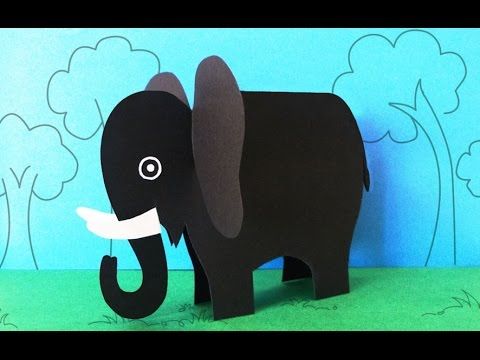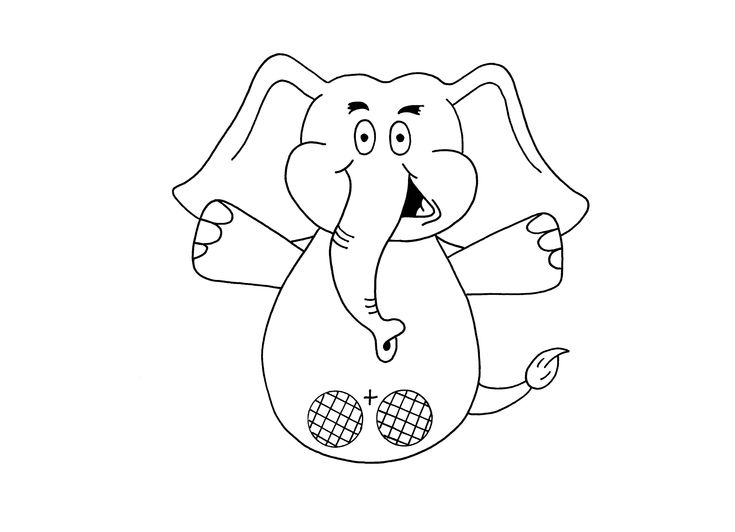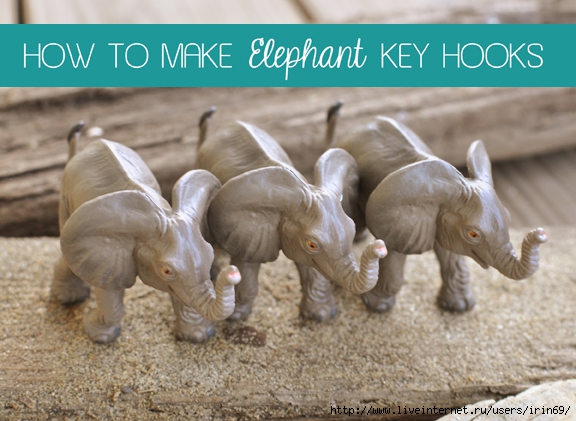How to make elephant dance book
HOW TO MAKE AN ELEPHANT DANCE
Review
Angelou Angelos & Sini Emi
€14.00€12.60
When a little mouse meets an elephant who dances under the commands of a flea, everything changes for him.
Α children’s book about turning our weaknesses into strengths.
Άμεσα Διαθέσιμο
HOW TO MAKE AN ELEPHANT DANCE quantity
Add to Wishlist
SKU: 36.020
- Description
- Reviews (0)
Description
A little mouse is wandering hungry in a garden when he comes across a small piece of cheese. Before he has the chance to pick it up, a squirrel grabs the cheese and runs away with it. “If I were bigger, everyone would respect me and no one would ever dare steal my cheese!”
But when he meets an elephant who dances under the commands of a flea, everything changes for him.
Only logged in customers who have purchased this product may leave a review.
Details
You may also like…
Angelos Angelou and Emi Sini both received their degree in engineering from National University of Athens in 2003. Since 2005 they have started their successful career by writing a great number of theatrical plays, songs and books for children. In 2007 they won the Greek State Theatrical Play for Children Award, in 2016 How to Make an Elephant Dance won the Greek State Picture Book Award while their picture book An Alphabet Journey was included into the White Ravens list of the International Children’s Library of Munich. Some of their books have been translated into other languages while others have been turned into theatrical plays.
They have also established one of Greece’s most successful artistic theatrical group “Kopernikos”(www. kopernikos.gr), where every year, since 2009, they write original and notable theatrical plays for children of every age, accompanied by original songs and music.
kopernikos.gr), where every year, since 2009, they write original and notable theatrical plays for children of every age, accompanied by original songs and music.
Read More
Greek-born and Athens based Sophia Touliatou has studied Graphic Design and works as an illustrator, doing mostly books for children, many of which have gained merits and awards. You can find her work in Greece, France, Italy, Germany, Spain, the United States, and other countries around the world.Since 2010 she’s represented by Advocate Art Illustration Agency. FBpage: Sophia Touliatou
Read More
Payment
Methods
© 2022 Εκδόσεις Παπαδόπουλος. All Rights Reserved.
Design & Development by Darwin
This website uses cookies to improve your experience. We'll assume you're ok with this, but you can opt-out if you wish. Cookie settingsΑΠΟΔΟΧΗ
Πολιτική Απορρήτου (GDPR)
Making the Elephant Dance by Pande, Arvind (ebook)
This title will be released on .
This eBook is no longer available for sale.
This eBook is not available in your country.
About the eBook
At a time when businesses stare at unprecedented uncertainty, the SAIL turnaround story brings to us lessons of how companies can make miracles happen. Making the Elephant Dance talks about how the greatest business challenges can become the harbinger of the biggest corporate transformations, and how leadership can be the key influencer when companies face existential threats.
The economic reforms of 1991 transformed the Indian steel industry overnight from the most controlled to most open. This book is a narrative of the steel mammoth, SAIL, which fought back an existential threat to emerge as a winner when a combination of domestic and global factors plunged the industry into its worst ever crisis. The book delineates its in-house strategies, implementation challenges and the actions undertaken to bring about an unprecedented organizational transformation by those who participated, experienced and lived it.
The book delineates its in-house strategies, implementation challenges and the actions undertaken to bring about an unprecedented organizational transformation by those who participated, experienced and lived it.
Show more
Show more
In The Press
About the Author
- ;
- ISBN:
- Edition:
- Title:
- Series:
- Author:
- Imprint:
- Language:
- Number of Pages:
[disclaimer]
Page count shown is an approximation provided by the publisher.
 The actual page count will vary based on various factors such your device's screen size and font-size.
The actual page count will vary based on various factors such your device's screen size and font-size.
Download file formats
This ebook is available in file types:
This ebook is available in:
After you've bought this ebook, you can choose to download either the PDF version or the ePub, or both.
DRM Free
The publisher has supplied this book in DRM Free form with digital watermarking.
Required software
You can read this eBook on any device that supports DRM-free EPUB or DRM-free PDF format.
Digital Rights Management (DRM)
The publisher has supplied this book in encrypted form, which means that you need to install free software in order to unlock and read it.
Required software
To read this ebook on a mobile device (phone or tablet) you'll need to install one of these free apps:
- Ebook Reader (recommended)
- PocketBook (iOS / Android)
- Aldiko Reader (iOS / Android)
- Bluefire Reader (paid app)
To download and read this eBook on a PC or Mac:
- Adobe Digital Editions (This is a free app specially developed for eBooks. It's not the same as Adobe Reader, which you probably already have on your computer.)
Limits on printing and copying
The publisher has set limits on how much of this ebook you may print or copy. See details.
-
{{ format_drm_information.format_name }} unrestricted
{{ format_drm_information.format_name }} {{format_drm_information.
 page_percent}}% pages every day{{format_drm_information.interval}} days
{{ format_drm_information.format_name }} off
page_percent}}% pages every day{{format_drm_information.interval}} days
{{ format_drm_information.format_name }} off
Read Aloud
- {{ read_aloud_information.format_name }} on {{ read_aloud_information.format_name }} off
Invite an elephant to dance. Based on the book by Louis Gerstner Who Said Elephants Can't Dance? Construction news
Heading author - Stanislav Logunov,
expert in optimization and modernization of business processes in the construction industry
Every Monday, a new review of books about management, strategy, team building and business psychology is published in the author's section "The Power of Knowledge" on our site.
Louis Gerstner's book Who Says Elephants Can't Dance? allows you to see the inner world of an outstanding manager, virtually being present at his acceptance key decisions, many of which were more than complex. At stake was the fate of IBM, one of America's largest corporations, a national treasure. Everyone around was convinced that IBM was doomed, and they were waiting for the fall of the giant. A completely new look was required.
At stake was the fate of IBM, one of America's largest corporations, a national treasure. Everyone around was convinced that IBM was doomed, and they were waiting for the fall of the giant. A completely new look was required.
When Louis Gerstner was asked to lead IBM in 1993, his first reaction was to refuse. Income from the main activities of the corporation was rapidly declining, the strategy of splitting the company into separate independent divisions was chosen. The established corporate culture was outdated, but the resistance to change seemed insurmountable. However, Gerstner's desire to accept the challenge turned out to be stronger than the arguments of reason.
CLEAR ROCKET
Upon joining IBM, Gerstner faced passive resistance from company veterans, press ill will, and professional skepticism. The former CEO of American Express previously only dealt with the computer industry as a client, while IBM has developed bureaucratic traditions over the years, from dress code to management structure. The first task that faced the new leader was to preserve the integrity of the company, abandoning plans for its dismemberment. After this decision was made, everything else became, if not easier, then clearer.
The first task that faced the new leader was to preserve the integrity of the company, abandoning plans for its dismemberment. After this decision was made, everything else became, if not easier, then clearer.
Cost-to-income ratios fell short of industry norms, causing the company to overspend $7 billion a year. IBM's main product at the time, large servers, was simultaneously losing sales and market value, which meant that costs had to be drastically reduced.
The first step towards optimization was a reduction in staff by 35,000 people, in addition to the first wave of layoffs that took place a year before Gerstner's arrival and claimed 45,000 employees. Then the reorganization of unnecessarily cumbersome business processes was carried out - non-functional services were ruthlessly cut off, approaches were unified. All non-revenue-producing assets were sold, including the world-famous collection of modern paintings and an overgrown real estate fund, as well as unprofitable divisions, "prestige services". The leadership team was reorganized and a new board of directors was created. Employee awareness has gone to another level. The CEO personally informed them about the situation, explained the decisions made - this helped to avoid rumors and panic. In general, the company abandoned old traditions and an outdated vision and refocused from production processes alone to the needs of the market.
The leadership team was reorganized and a new board of directors was created. Employee awareness has gone to another level. The CEO personally informed them about the situation, explained the decisions made - this helped to avoid rumors and panic. In general, the company abandoned old traditions and an outdated vision and refocused from production processes alone to the needs of the market.
THINK GLOBALLY
In the first year of work, after carrying out the priority changes, Gerstner concentrated on three areas - changing the organizational structure, brand image and wage system.
IBM was and remains a giant international organization. At that time, it structurally consisted of territorial divisions that ensured the company's presence around the world, and production divisions that developed and manufactured products. At the same time, none of them was interested in consumers - the territorial services were engaged in the development of territories, and the production services were engaged in the production of "what they thought could be created or what they wanted to create, without caring about the needs and tasks of consumers. " As a result of the autonomy of individual territorial divisions, a significant number of superfluous specialists appeared who performed duplicating functions, and each branch pursued its own policy.
" As a result of the autonomy of individual territorial divisions, a significant number of superfluous specialists appeared who performed duplicating functions, and each branch pursued its own policy.
The head of the company decided to abandon geographical autonomy, rebuilding the company on the basis of the principle of teams aimed at meeting the needs of different types of consumers representing different industries. The new structure took root for many years - it was necessary to redistribute resources and processes - but in the end it gave the expected result.
The brand image also needed to be reformed. Gerstner was convinced that a successful company must first of all focus on customers and the market, in connection with which he attached great importance to advertising and marketing. According to the tradition that has developed at IBM over the years, marketing was understood as sales. But in a global sense, sales are the result of marketing. And marketing is a wide range of activities that includes, among other things, market analysis, studying the preferences of potential customers and competitors, brand management and advertising.
Consolidating the advertising budget previously dispersed between divisions, IBM abandoned the motley marketing materials, instead hiring an agency founded by prominent specialist David Ogilvy, Ogilvy and Mather. Investments were doubled, and the high level of investments was maintained for a long time, but a series of innovative advertising campaigns changed the perception of the corporation, emphasizing its customer focus.
PAY FOR THE RESULT
By the time Gerstner joined IBM, employee remuneration consisted primarily of salaries, and performance-based pay was small. The payment system was undifferentiated, everyone received an annual increase, and its size in percentage terms was practically the same for all levels. At the same time, the company provided a huge social package. Retirement projects, voluntary medical insurance, holiday homes for employees - all this was the norm. During the financial crisis, this approach was unacceptable. After the dismissal of tens of thousands of workers, it would be at least strange to continue to support social programs in the same volume. And the existing system of payment did not stimulate the increase in the efficiency of employees in any way.
And the existing system of payment did not stimulate the increase in the efficiency of employees in any way.
The main component of the new payment system was its differentiation. The total amount of payments now depended on the market performance of the corporation, the size of the increase in salary - on personal results and the "price" of a specialist in the labor market, bonuses - on the results of the company's work and personal participation, stock options - on the professionalism of the employee and his significance for the company.
It should be clarified that a stock option is a document giving the right to buy shares of a company at a fixed price for a specified period. If the market value of the shares rises, the difference in price becomes the option holder's profit. In Russia, this method of encouragement is not common, but it seems to be a fairly effective incentive for management, since it creates a direct financial interest in the results of the company's activities.
IBM introduced a rule that only executives who bought a certain block of shares at their own expense were entitled to a stock option. Gerstner wanted employees to behave like long-term shareholders, feeling the pressure of the market and striving to create competitive advantages for the company. It is impossible to reform a corporation when the approach to incentive payments does not match the new strategy. The task was to create a unified system of incentive payments directly related to the performance of the entire corporation. Stock options became available to tens of thousands of employees. Bonuses for senior executives depended entirely on the overall performance of IBM.
As a result of the change in pay philosophy, the benefits package has been reduced, but the opportunity for everyone to receive a reward for the success of the entire company has increased.
FOLLOW THE STRATEGY
The basis of the strategy should be a detailed objective analysis of the competitive environment. For many years, IBM operated in an environment where there was virtually no competition, and the corporation was accustomed to existing outside the influence of market forces. Employees gradually lost touch with reality. The success of the company was the result of the existence of a unique product - servers, and not skillful management. Everything depended on one single horse, but the horse fell. Personal computers have not been considered a promising area for too long. As a result, leadership in the development of operating systems passed to Microsoft, and in microprocessors to Intel.
For many years, IBM operated in an environment where there was virtually no competition, and the corporation was accustomed to existing outside the influence of market forces. Employees gradually lost touch with reality. The success of the company was the result of the existence of a unique product - servers, and not skillful management. Everything depended on one single horse, but the horse fell. Personal computers have not been considered a promising area for too long. As a result, leadership in the development of operating systems passed to Microsoft, and in microprocessors to Intel.
Gerstner's arrival at IBM coincided with the start of the Internet revolution. A technological shift was coming - a change in the data processing model. In the IT sector, such shifts occur once every 10–15 years, and companies that noticed them in time and managed to ride the wave soared to the very top.
The new strategy was built on two factors. The first was work with consumers. The new IBM believed that the future belongs to those who offer end-to-end solutions that combine the best technologies from different manufacturers, are integrated into the client's business processes and provide high-quality service. The company should have developed a service-related business, which was a promising business that was being overshadowed by manufacturing.
The new IBM believed that the future belongs to those who offer end-to-end solutions that combine the best technologies from different manufacturers, are integrated into the client's business processes and provide high-quality service. The company should have developed a service-related business, which was a promising business that was being overshadowed by manufacturing.
The second factor was network processing, which expanded the capabilities of existing PCs. The corporation realized in time that the future belongs to industry standards. When combining different equipment in a network, it must be compatible. In the computer industry, on the contrary, the imposition of components was accepted, when compatibility was ensured with other equipment only from the same manufacturer. Open systems posed a threat to manufacturers whose business model was based on controlling consumers through the incompatibility of their devices with others. But there was an objective need for integration, and IBM entered this market, having managed to create a new business based on the provision of services, based on the potential of the company's employees. From 19For 93 years, when the reorganization began, the share of services in the growth of the company's income was almost 80%.
From 19For 93 years, when the reorganization began, the share of services in the growth of the company's income was almost 80%.
The decision to sell technology and software licenses to third parties was a big help. This made it possible not only to justify the costs of their development, but also to make a profit, which in 2001 amounted to $ 1.5 billion.
At the same time, a number of directions had to be abandoned. In particular, the hopeless battle of operating systems between Microsoft and IBM was over, and OS / 2 went into oblivion. IBM stopped developing business applications that were prestigious but were on the verge of payback, leaving this market to highly specialized companies with which service contracts were concluded. The networks owned by the corporation were sold - there were too many networks in the world, their price was falling, and in addition, IBM left a market segment that was not a priority in terms of its strategy.
CHANGE CULTURE
The hardest part was changing the culture—the attitudes and habits of hundreds of thousands of employees accustomed to working in a successful, competitive organization. Gerstner likens this task to teaching a zoo-born lion to survive in the jungle. He succeeded.
Gerstner likens this task to teaching a zoo-born lion to survive in the jungle. He succeeded.
Historically, the company's values have come down to three rules - be the best at everything, serve your products the best, respect the personalities of employees. They were reflected in all the activities of IBM, and for a long time this approach worked. But the world is changing, and values are changing with it. Perfectionism turned into bureaucratization, which hampered decision-making, and “respect for the individual”, taking on hypertrophied forms, led employees to believe that nothing needed to be done to gain respect - they counted on privileges simply by right of employment.
Gerstner's rules were fundamentally different. Here they are: the market is the basis of the corporation's activity, its success is the success of the client. IBM is a technology company that cares about quality. The main indicators of success are share price and customer satisfaction. IBM is a commercial organization with a minimum of bureaucracy and a maximum of productivity that thinks and acts quickly. IBM is committed to its strategic vision, working as a team, and attentive to the needs of its people.
IBM is committed to its strategic vision, working as a team, and attentive to the needs of its people.
Following these rules implied the creation of a new leadership group, consisting of people who are determined to win, who know how to work in a team and have high performing qualities, who set a new model of behavior, regardless of their place in the hierarchy. Leaders who embraced the new culture received maximum support and promotion.
The result of the reform was a renewed corporation, which managed to regain its almost lost greatness. Louis Gerstner proved that with the right approach to control, even the largest and most clumsy creature can be taught new tricks.
Gerstner's work is an undoubted masterpiece of business literature, and in this review I have not been able to consider all of its aspects worthy of attention. No less interesting are the author's reflections on leadership and the requirements for a leader, or the details of the IBM reform.
Happy reading, and don't be afraid to ask the elephant to dance!
I will be glad to receive your comments and suggestions at: [email protected]
Yellow elephant
On a winter day on the white path of the park, I met a yellow elephant. He walked straight towards me, and the snow crunched under his feet. I stopped. The elephant also got up. I said to the elephant:
- Hello!
The elephant did not answer. He cried. From somewhere in the depths of the yellow carcass came a quiet, thin sob.
— Why are you crying? I asked the elephant.
— It's not me crying, — a thick voice was heard from under the trunk, — it's the hind legs crying.
Here you go! I never thought that elephant feet could cry.
— Why are they crying?
“The boys cut off their tail,” a thick voice answered.
“It's bad for an elephant without a tail,” I said sympathetically and once again carefully looked at the yellow elephant. An elephant is like an elephant: there is a trunk, there are burdock ears, however, one ear is torn; there are eyes, four legs are in place - the front ones are in black felt boots, the back ones are in gray, with patches. There really was no tail. A thread dangled in place of the tail.
An elephant is like an elephant: there is a trunk, there are burdock ears, however, one ear is torn; there are eyes, four legs are in place - the front ones are in black felt boots, the back ones are in gray, with patches. There really was no tail. A thread dangled in place of the tail.
“It's bad for an elephant without a tail,” I agreed.
In response, a thin whiny voice came from the depths of the elephant:
— And not because of the tail at all. My boots are worn out, the heel is frozen. I say - let's go home, but she does not go!
“We were assigned as an elephant,” a thick voice sounded again from under the trunk. - Me - with the front legs, hers - with the hind legs. We can't leave.
“I will pass from you to another elephant,” said the hind legs and explained to me: “We also have a purple elephant.
- Purple elephant - boyish.
- So be it! But I will be the front legs. No one will tear off the tail.
Feet fell silent. Only a slight sniff was heard under the yellow elephant skin.
“Such a nice yellow elephant,” I said, “and the front legs quarrel with the hind legs. It is difficult to walk on the ground when the legs quarrel.
"It's difficult," agreed the elephant.
- How long have you been assigned as an elephant? I inquired.
“Third day,” answered the front legs.
— And what can an elephant do?
“Dance,” said the hind legs.
“Dance,” I asked the elephant, and immediately realized that there was no music. But the elephant said:
- We are without music. We are ourselves.
Inside the elephant they sang in two voices. The elephant began to dance. He lifted his legs one by one. Sometimes he got confused and stumbled. But in general, he danced quite decently: he circled, squatted, jumped and even stood up on his hind legs, and waved his front legs in black felt boots in front of my nose. The elephant forgot about all the strife and about the fact that his heel was frozen and his tail was torn off. The elephant swung its trunk, and its yellow carcass rose and fell easily, resembling a yellow parachute.
The elephant swung its trunk, and its yellow carcass rose and fell easily, resembling a yellow parachute.
But inside the elephant the music stopped. The legs stopped. The trunk dropped. The elephant looked at me with round eyes and seemed to ask:
"How did you like my dance?"
“Very good,” I said and clapped. The elephant bowed politely.
“We can do even better,” boasted the front legs, “we are tired today.
“And our heel is frozen,” reminded the hind legs.
— I liked it! I confessed. “You'd think you were appointed elephant two weeks ago.
The elephant was silent: he was embarrassed by such praise. I had to go, and I extended my hand to the elephant.
- Goodbye!
“Goodbye,” the yellow elephant answered in two voices and held out his trunk to me.
A small hand, dressed in a rough mitten, looked out of the trunk. I shook the elephant's hand-trunk and walked along the white path.
Moving away, I looked back.











